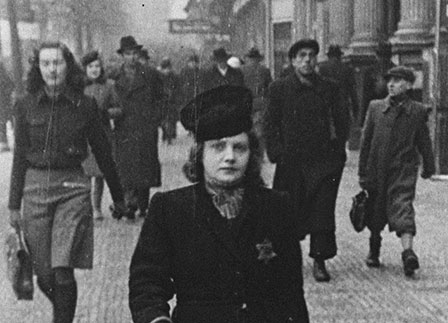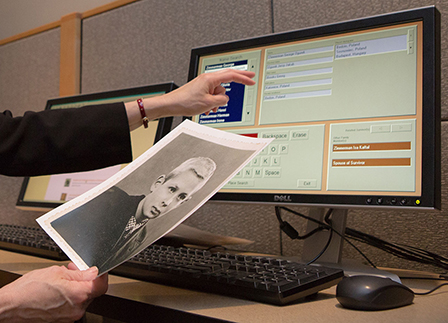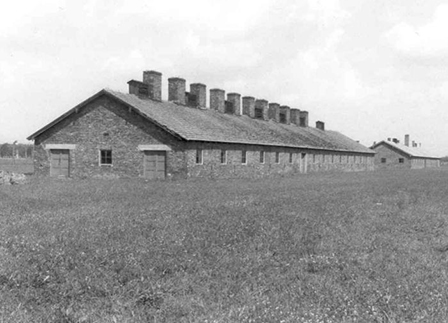Overview
- Brief Narrative
- Leather luggage tag used by Otto Schick, 33, when he emigrated from Vienna, Austria, to United States in June 1940. He left by ship from Genoa, Italy, with three handmade trunks, but all the trunks, except one, were lost during the crossing. Otto worked as a metal worker in Vienna which was annexed by Nazi Germany in March 1938. Not long after this, he joined an underground vigilante resistance group whose ultimate goal was to assassinate Hitler. In June 1940, Otto received a visa and left for the US. His mother and sister were deported from Vienna to a concentration camp where they perished before they could join him. In January 1944, he enlisted in the US Army.
- Date
-
emigration:
1940 June
- Geography
-
emigration:
Conte de Savoia (Ship);
Vienna (Austria)
- Credit Line
- United States Holocaust Memorial Museum Collection, Gift of Susann Schick Cerruto
- Contributor
-
Subject:
Otto Schick
- Biography
-
Otto Schick was born on October 20, 1907, in Vienna, Austria. His father, David, was a mailman and died in 1916. His mother was Malvine Winternitz; he had two sisters, Ernestine and Olga. Otto worked as a metal worker in Vienna, fabricating metals parts for farm machinery and dairy equipment. In March 1938, the Anschluss occurred and Austria became part of Nazi Germany. Sometime that year, Otto joined an underground vigilante group that planned to assassinate Hitler. For eleven months, his family never knew where he was, what he did, or if he was dead or alive. He never talked about his activities during that period.
His mother had a relative, Gustav Winternitz, a doctor in New York City, who agreed to sponsor the family and file an affidavit of support for their immigration visas to the United States. Otto received his visa in April-May 1940 and prepared to leave immediately for New York. Malvine and Olga also received their completed paperwork and were to follow two weeks later. Otto went to Genoa, Italy, to board the ship, the Conte de Savoia, and during the boarding process, heard rumors that this was the last ship that would be going to the United States. He arrived in New York on May 23, 1940. He made persistent efforts to try to get his family out. At some point, he learned that his mother and sister, Olga, never escaped Vienna and were deported to a concentration camp where they perished. Ernestine survived and got married. She died in Vienna on January 5, 1962.
Otto married sometime between 1940-1943. In January 1944, he joined the US Army and became a naturalized citizen that April. He was a member of Company "M", 6th ASFTR, and served as a guard at an internment camp in Modesto, CA, during the war. He was honorably discharged in April 1945. Otto later settled in Philadelphia and had one daughter.
Physical Details
- Language
- English
- Classification
-
Identifying Artifacts
- Category
-
Labels
- Object Type
-
Luggage tags (aat)
- Physical Description
- Small, rectangular leather luggage tag made from two stitched layers of leather with a slot opening at the end with 2 angled corners. A rectangular frame is cut out on the top layer to show the handwritten paper address label.
- Dimensions
- overall: Height: 2.250 inches (5.715 cm) | Width: 4.125 inches (10.478 cm)
- Materials
- overall : leather, paper, thread, ink
- Inscription
- front, on paper label, handwritten in black ink : O. _ L. Schick / __ XII ___ .72. / ___ / New York
Rights & Restrictions
- Conditions on Access
- No restrictions on access
- Conditions on Use
- No restrictions on use
Keywords & Subjects
Administrative Notes
- Legal Status
- Permanent Collection
- Provenance
- The luggage tag was donated to the United States Holocaust Memorial Museum in 2007 by Susann Schick Cerruto, the daughter of Otto Schick.
- Record last modified:
- 2022-07-28 18:26:06
- This page:
- http://collections.ushmm.org/search/catalog/irn35472
Download & Licensing
In-Person Research
- By Appointment
- Request 21 Days in Advance of Visit
- Plan a Research Visit
- Request to See This Object
Contact Us
Also in Otto Schick collection
The collection consists of a luggage tag, documents, and photographs relating to the experiences of Otto Schick and his family in Vienna, Austria, before and during the Holocaust and the experiences of Otto Schick in the United States following his emigration in 1940.
Date: 1940-1945
Otto Schick papers
Document
Collection of documents, a passport, and photographs documenting the Holocaust-era experiences of Otto Schick, originally of Vienna, Austria.



